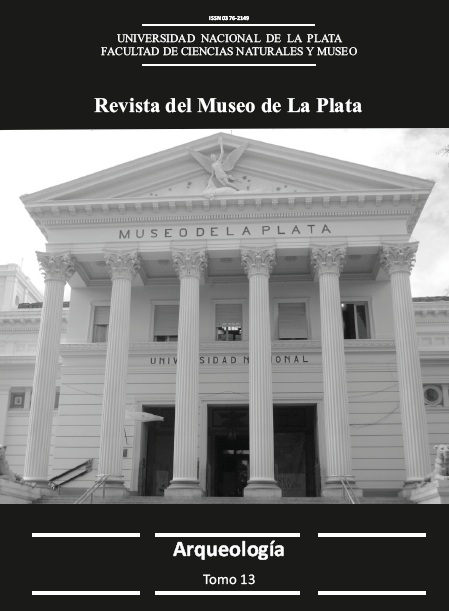Estudio de huellas producidas con objetos de metal durante el último cuarto del siglo XIX en el sitio arqueológico La Libertad (partido de San Cayetano, Buenos Aires, Argentina)
Keywords:
Rural Settlement, Archaeofauna, Processing Marks, Metal Work Objects, Nineteenth Century,Abstract
The research conducted since 2007 at the archaeological site of La Libertad (San Cayetano county, Buenos Aires Province) indicate a heterogeneous context consisting of faunal remains, vitreous pieces, fragments of earthenware, stoneware and china clay pipes, and many of metal and brick objects. These findings are related to the advance and occupation of the Interserrana area by creole populations, and specifically with an agricultural establishment that worked there in the last quarter of the nineteenth century. In this paper we present the first results of the study of the cut marks made with metal elements in the archaeofaunal assemblage from that site, which is composed of both materials found on the surface (n= 817) as in stratigraphy (n= 1361). The objective of this analysis is to understand the different forms of exploitation, processing and consumption of the various species that were manipulated by local populations. For this purpose, different variables were considered, including the metallic element used, the animal to process, and the anatomical unit that was selected. In general, most of the traces analyzed (n= 384) were conducted in both medium-sized mammals (mostly Ovis aries) and large sized mammals (e.g. on different anatomical parts of Bos taurus), with metal objects such as knives, axes and saws.Downloads
Published
Issue
Section
License
La publicación en la RMLP se realiza bajo los términos de la licencia de uso y distribución Creative Commons BY-NC-SA 4.0 para Argentina (https://creativecommons.org/licenses/by-nc-sa/4.0/) que permite a terceros la distribución, la copia y la exhibición del artículo siempre que citen la autoría del trabajo, la publicación en la RMLP, número concreto y las páginas en la que encontraron la información. No se puede obtener ningún beneficio comercial y no se pueden realizar obras derivadas con fines comerciales que no autorice la editorial. Si se remezcla, transforma o construye sobre el material, deben distribuir sus contribuciones bajo la misma licencia que el original.
La puesta a disposición del artículo en la RMLP supone para los autores argentinos el cumplimiento de lo establecido en la Ley 26899 de Creación de Repositorios Digitales Institucionales de Acceso Abierto, Propios o Compartidos, del 13/11/2013 en su artículo 5º, en lo relativo a la obligatoriedad de facilitar en acceso abierto los resultados de investigaciones financiadas por agencias gubernamentales y de organismos nacionales de ciencia y tecnología del Sistema Nacional de Ciencia, Tecnología e Innovación.










